How We Built an AI Startup While Trying to Overcome Our Language Barriers to Sell Globally

Our journey began with the simple goal of selling websites. A couple of years ago, I found myself seeking to expand my design services into the U.S. market, aiming to offer subscription-based design services to startups and venture capital firms.
The problem is that I'm from Eastern Europe, and my English isn't strong enough for fluent video meetings. Faced with a language barrier, I turned to my partner, Roman Hokhloff, an experienced sales expert, for help.
Thanks to this limitation, Roman built a customer engagement funnel that allowed us to get paid without live conversation. As a result, our design services turned into an AI startup aiming to revolutionize the sales department.
If you have no problem talking to customers, you definitely want to have fewer live meetings, get more warm leads, and make more sales. In this story, I'll show you how, step by step, using readily available and affordable tools, you can start increasing your sales.
I know that most of those reading this material are independently searching for potential clients on LinkedIn, writing them the first cold message, and trying to arrange a demo call. By following at least some of the steps outlined in this article, you'll make your job a lot easier, and you'll be able to get a lot more client meetings.
Step One: Prospect Gathering
We began by assembling a pool of potential clients and leveraging tools like Sales Navigator on LinkedIn to identify companies that fit our ideal customer profile. This step was crucial in setting the foundation for our outreach strategy.
Sales Navigator is not the only tool. For example, the base can also be gathered in Apollo or Lusha. There are other ways and sources, but these are the most popular.
Step Two: Automating Outreach
Next, we employed Waalaxy to automate our LinkedIn outreach efforts, sending personalized connect requests and initial messages. You can check out other tools, like Buzz AI. Each has its pros and cons.
Initially, we offered a free template with a marketing website structure to avoid needing a demo presentation. But later, making such templates became labor-intensive, and we had to solve the demo issue.
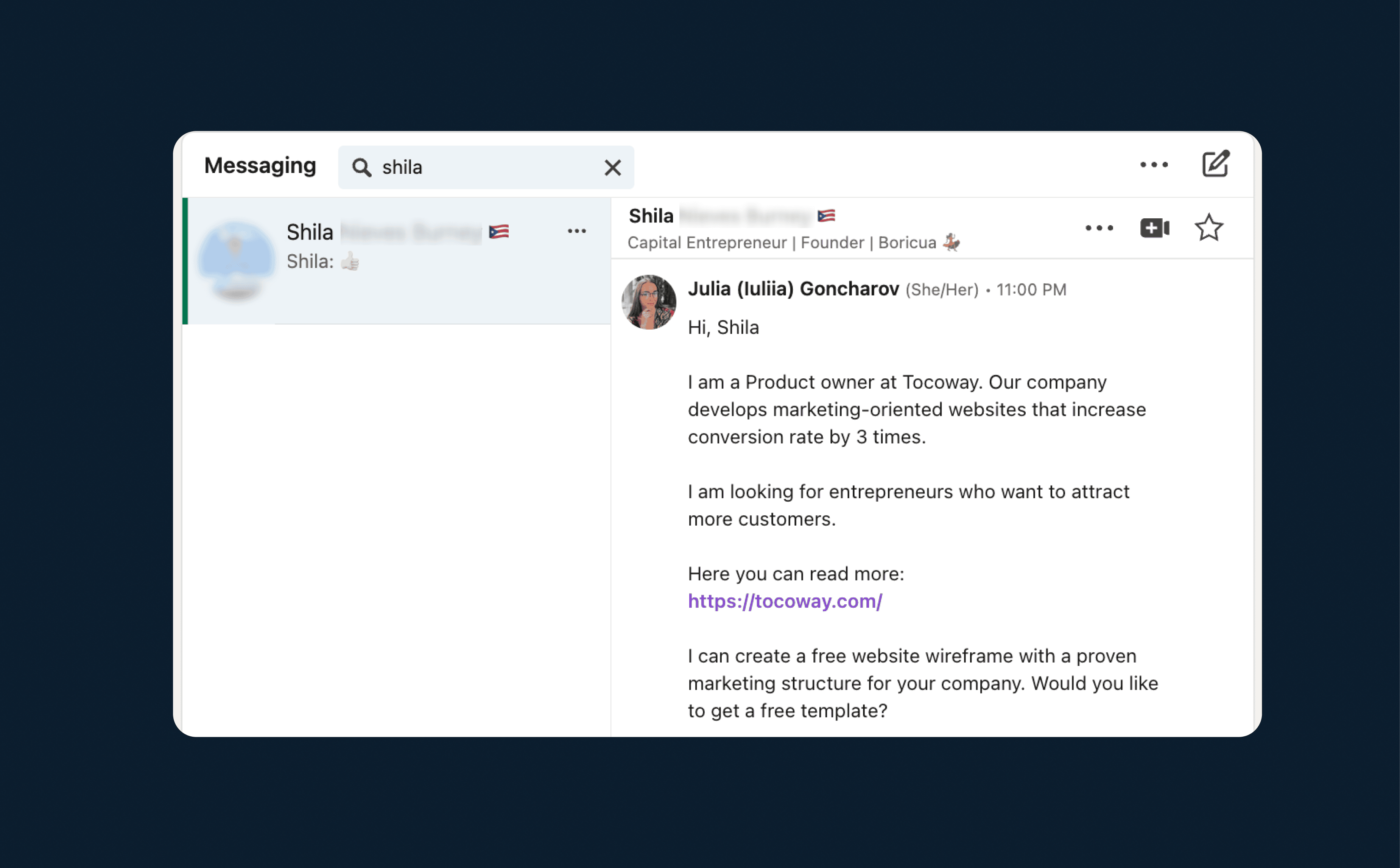
At the time, our website looked like this: tocoway.webflow.io
It is important to note that this approach has obvious disadvantages:
🔴 Manual analysis and testing. What is the response conversion rate? Should the message be changed to improve the response rate, etc.?
🔴 Time-consuming to communicate. The average number of messages in a dialog is between 5 and 15.
Looking ahead, today at this stage, we are working with an AI bot that learns and changes its strategy if it fails to engage the interlocutor in a dialog. But when we first started, we used template messages.
Step Three: Scheduled a Demo
If the contact went to the contact and responded to automated messages, we engaged in a dialog to confirm the customer's need and tailor a solution for them. The targeted action of this funnel was to invite an interested customer to a Demo meeting. The customer signed up for the meeting via Calendly. In reality, these were pre-recorded webinars, cleverly designed to simulate a live interaction, thus personalizing the experience without direct involvement.
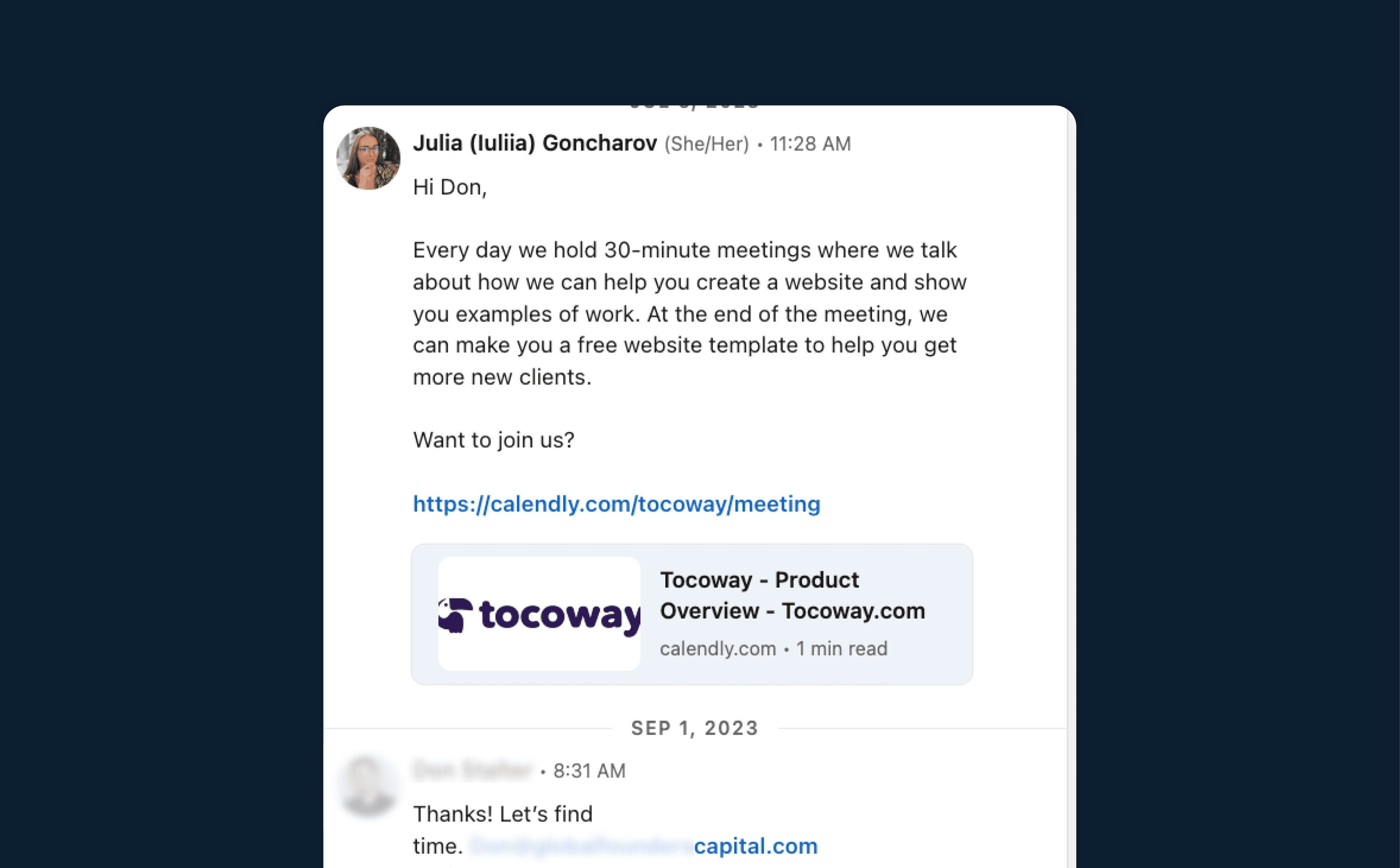
Step Four: The Demo
On Fiver, we hired an actress to record a webinar-style presentation.
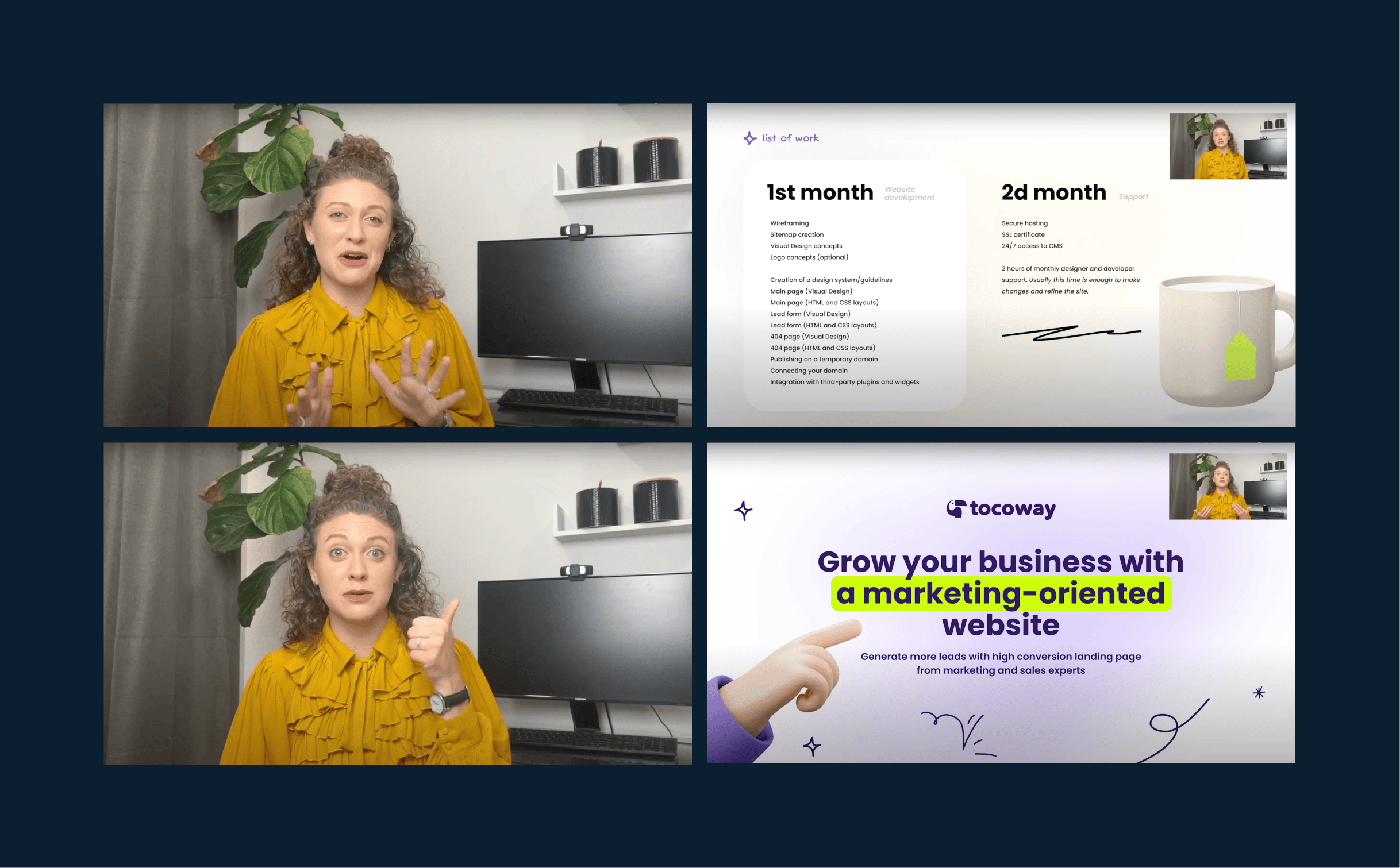
We hosted this video on a webinar platform. You can find many webinar hosting and automation platforms, or try EverWebinar which has good functionality.
Before the meeting, the client was informed that it would be a group meeting. The client could ask questions in the chat and receive answers from the moderator in real-time. This approach allowed us to engage with clients in real time during these webinars without the need for our direct involvement in every presentation.
If this seems complicated, you can offer to watch a demo instead of a video meeting and direct the user to a video hosted on your website.
💬❗️ Write in comments if you want to learn more about how to automate demo meetings. If we get more than 20 comments, I'll make a separate post with a link to our video, terms of reference for the actor and tips on automation.
The Final Step: Closing the Deal
The final step was closing the sale, which we managed through follow-up communications on LinkedIn. It's a dance of persuasion, where each message is crafted to inch closer to that decisive 'yes.'
The thrill of this phase is unparalleled. Our first client, a venture capital firm based in Atlanta, navigated through our sales funnel without a single live conversation, culminating in a $2,100 transaction entirely via LinkedIn.
It was proof that we had the right strategy.
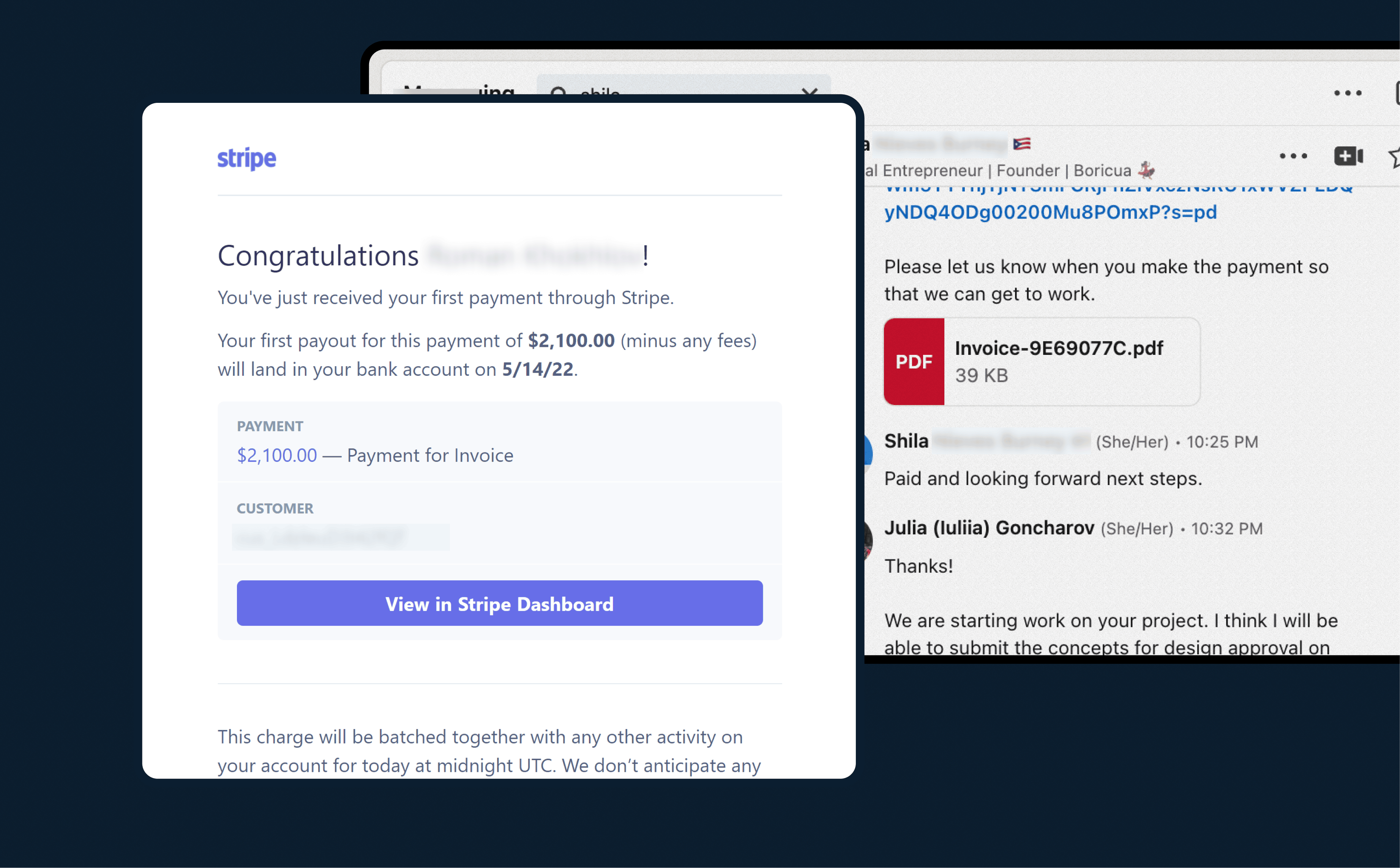
👉 Still not enough
After making a few sales, we realized that it is possible to sell products or services in the United States using messages only, even if the product costs several thousand dollars. But despite our early success, we quickly realized that to minimize personal involvement, we needed a new approach. Even with an automated demo meeting, someone has to handle the communication, right? So, we need a sales manager who is responsible for every funnel step. We weren't ready for it, and we stopped.
And here we are, a year later, Roman has implemented AI in our other local business, Leadhero. Leadhero was founded in 2020 and helped SMBs get leads through automated calls. However, due to the specifics of the channel, these leads didn't get warm enough, so Roman started using AI in messengers to have meaningful dialogs with the prospects after the first call, preparing the lead for further communication with a salesperson. And it was a game-changer.
All that remained was to combine AI capabilities with outbound sales. So we returned to the U.S. market, but this time not as a design service but as Generative AI managers for sales.
The Culmination of Our Efforts: Tocoway AI
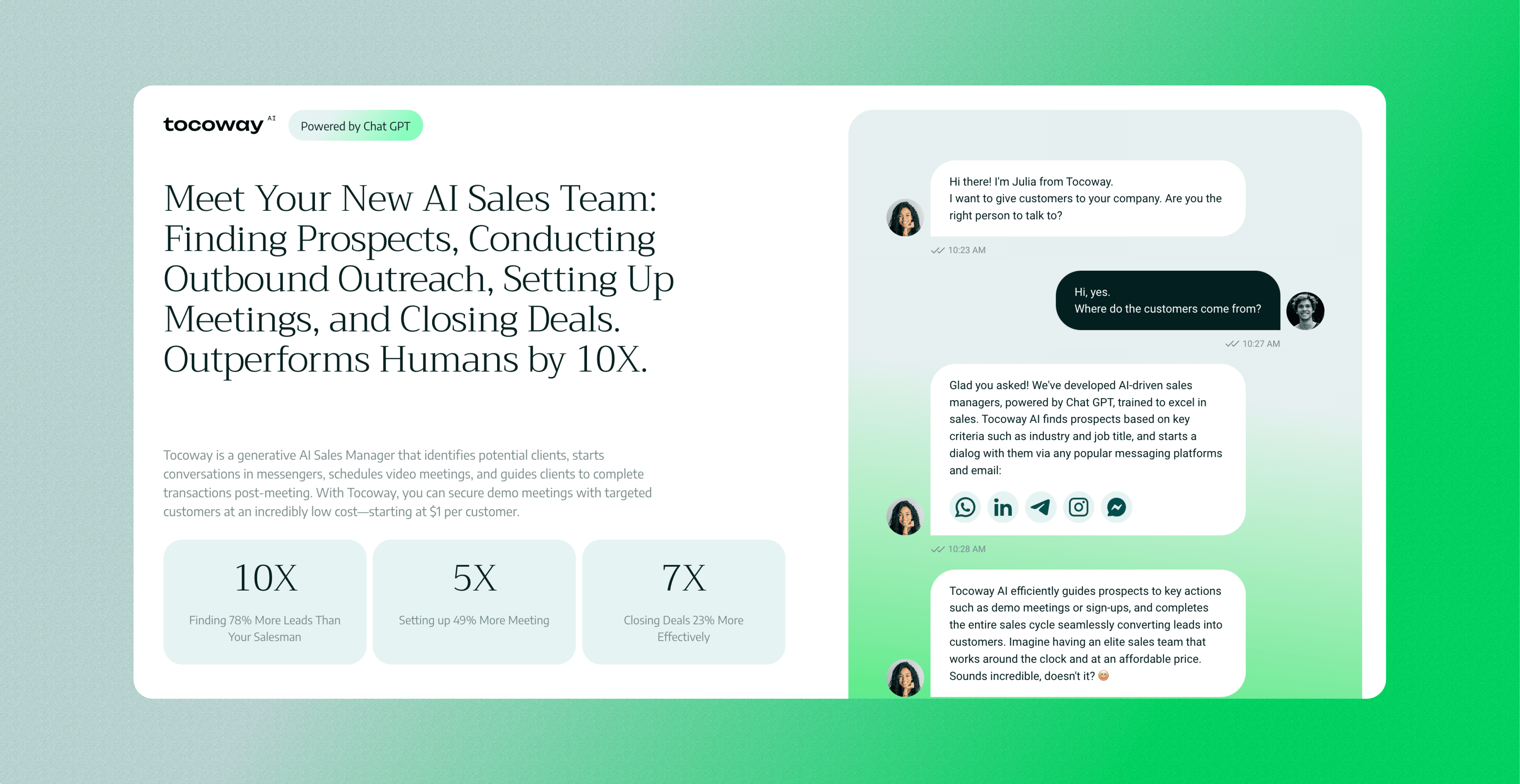
Tocoway represents the evolution of our initial sales process into a fully automated system powered by AI. At every stage of our sales funnel, we employ AI managers capable of conducting meaningful conversations with potential clients across various platforms, including LinkedIn, WhatsApp, and Telegram. These AI managers are trained to identify customer needs and guide them toward the desired action, whether attending a demo or registering for a service. Most importantly, they start the dialog first.
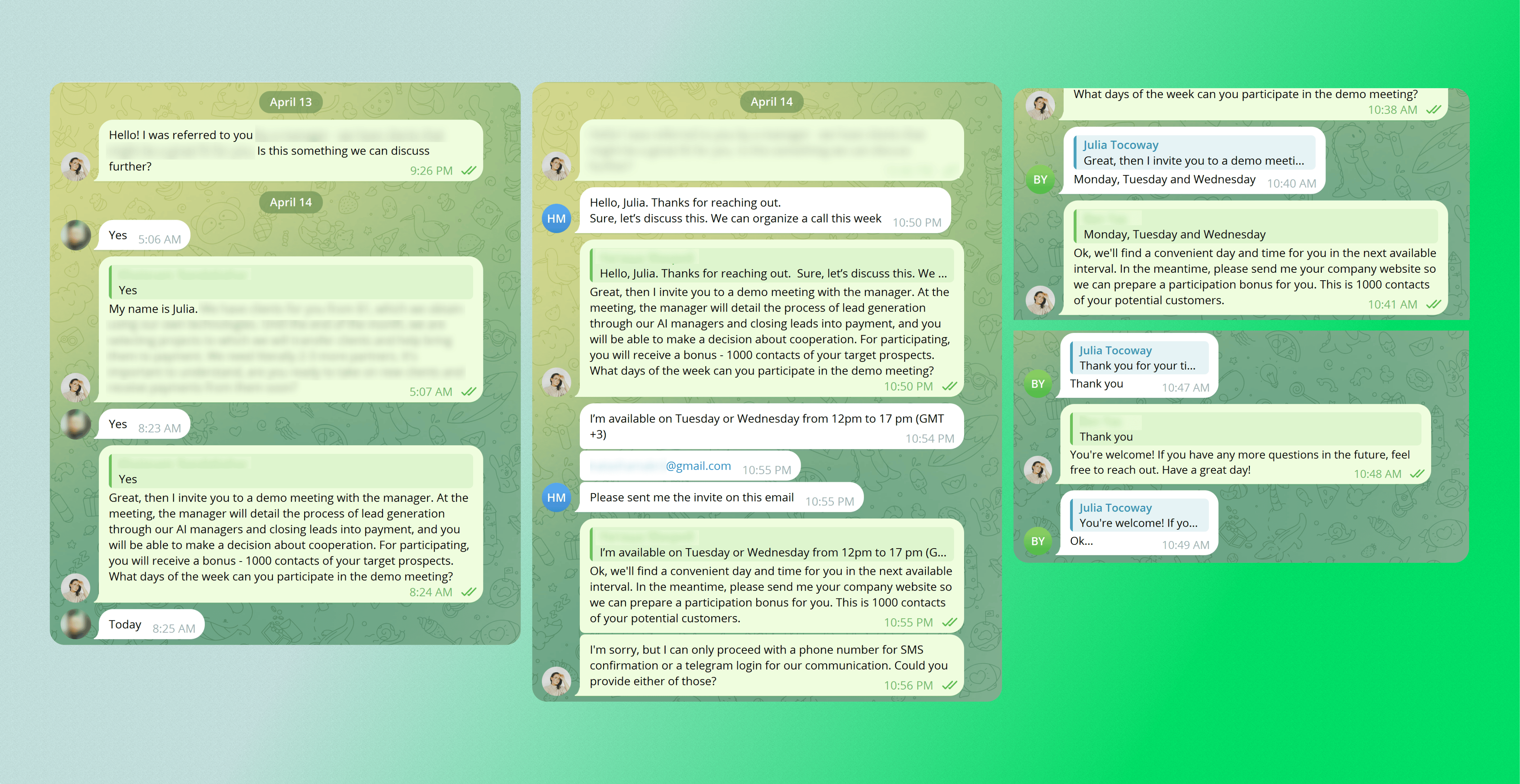
The Tocoway AI operates without human intervention, boasting impressive conversion rates at every funnel stage. Find below the conversion rates the AI managers achieved:
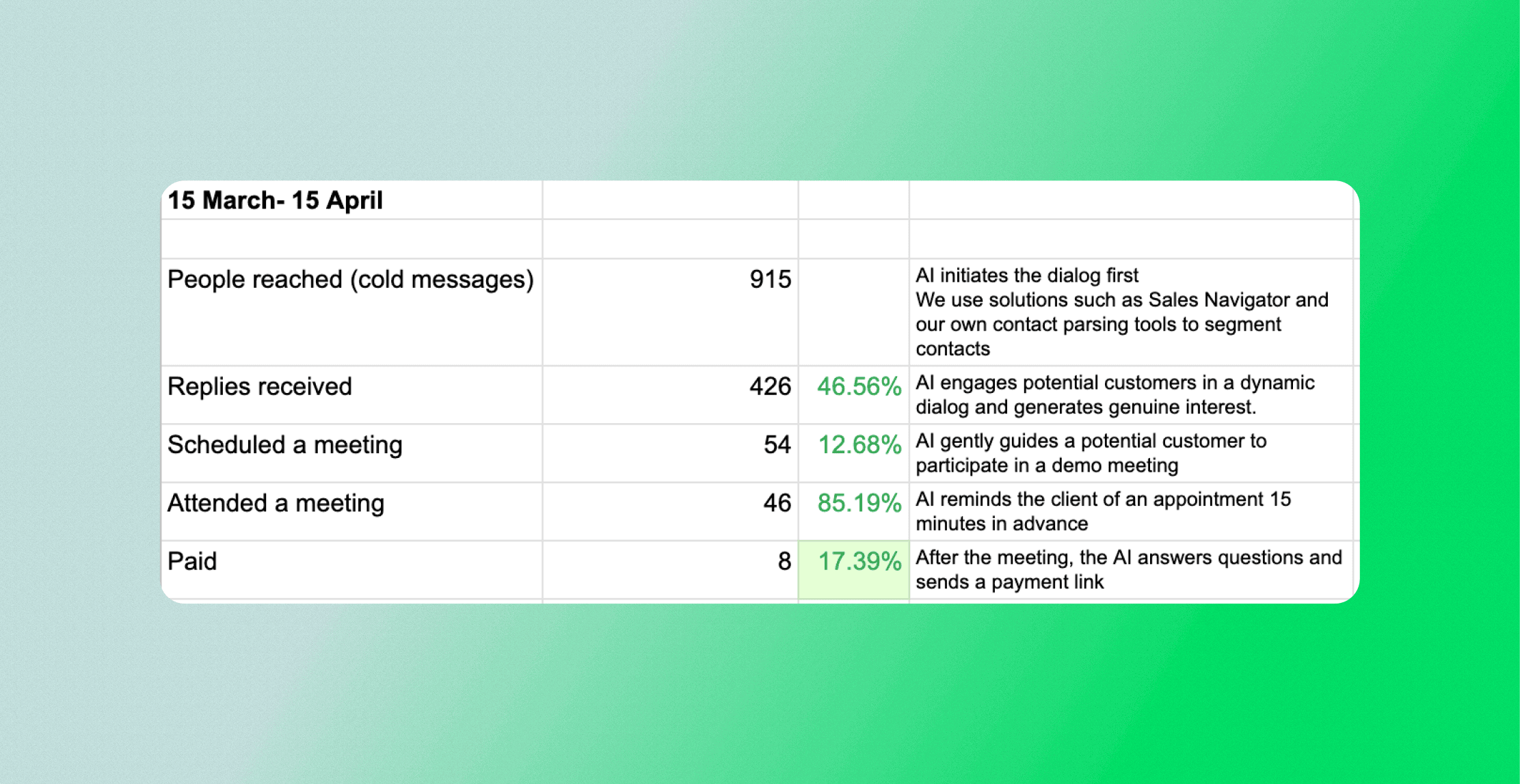
Learn more about our funnel conversions and Benchmarks on Indie Hackers
The implications of this transformation are vast, not just for our business but for any entrepreneur or sales team looking to streamline their sales processes. And even if you're not ready to accept that in 2024, you don't need live people to build your sales team, you can at least simplify your work and automate some of the processes.
💬🙏 We're curious to hear your thoughts. What automation tools have you integrated into your sales process? Do you use AI? Have you ventured into any of the strategies we've shared? What are the results?

Great article, thanks!
Quick tip: if you can't afford to pay for Sales Navigator, Apollo or Lusha, there is a more cost-effective way to source leads:
Sales Navigator also offers a 1 month free trial, and you could get 4 months at -75% with Microsoft "Founders' program".
I also launched a tool recently to scrape Sales Nav (and Apollo) with no limits, then enrich with lots of data points from 20+ data providers
if you love Clay you may want to check it out :) ! There's a free trial too
=> https://airscale.io
Thanks! I'll check Clay too 😊